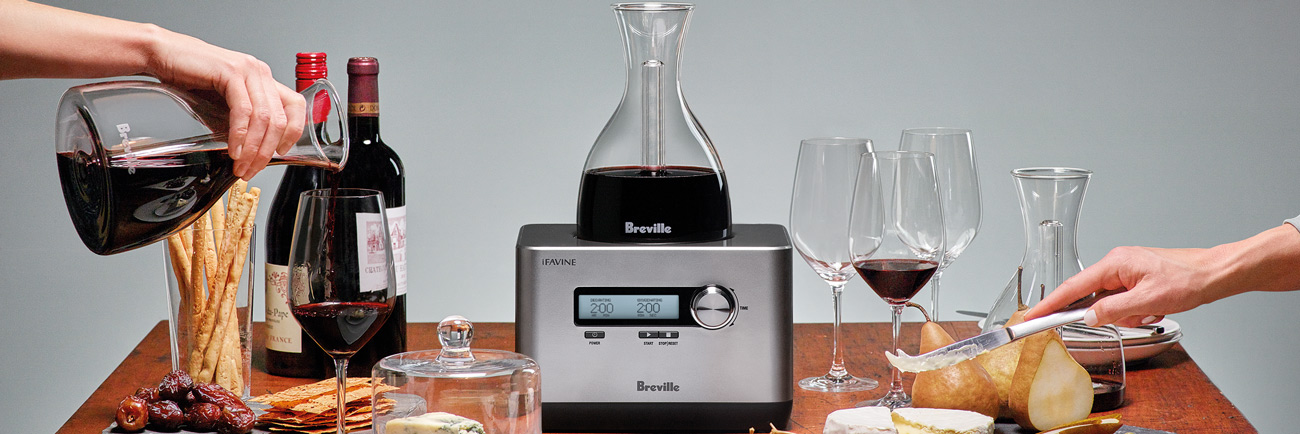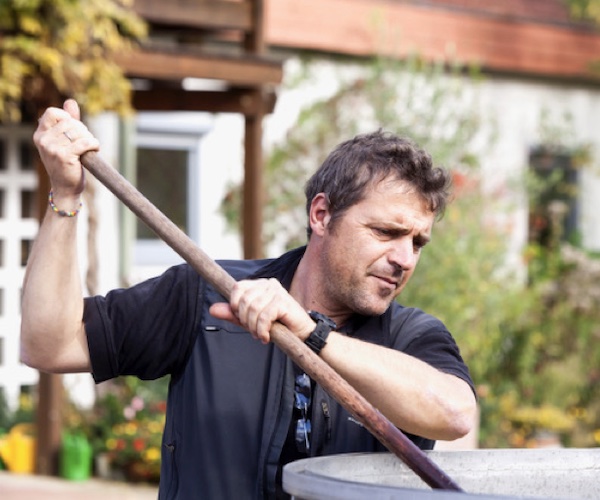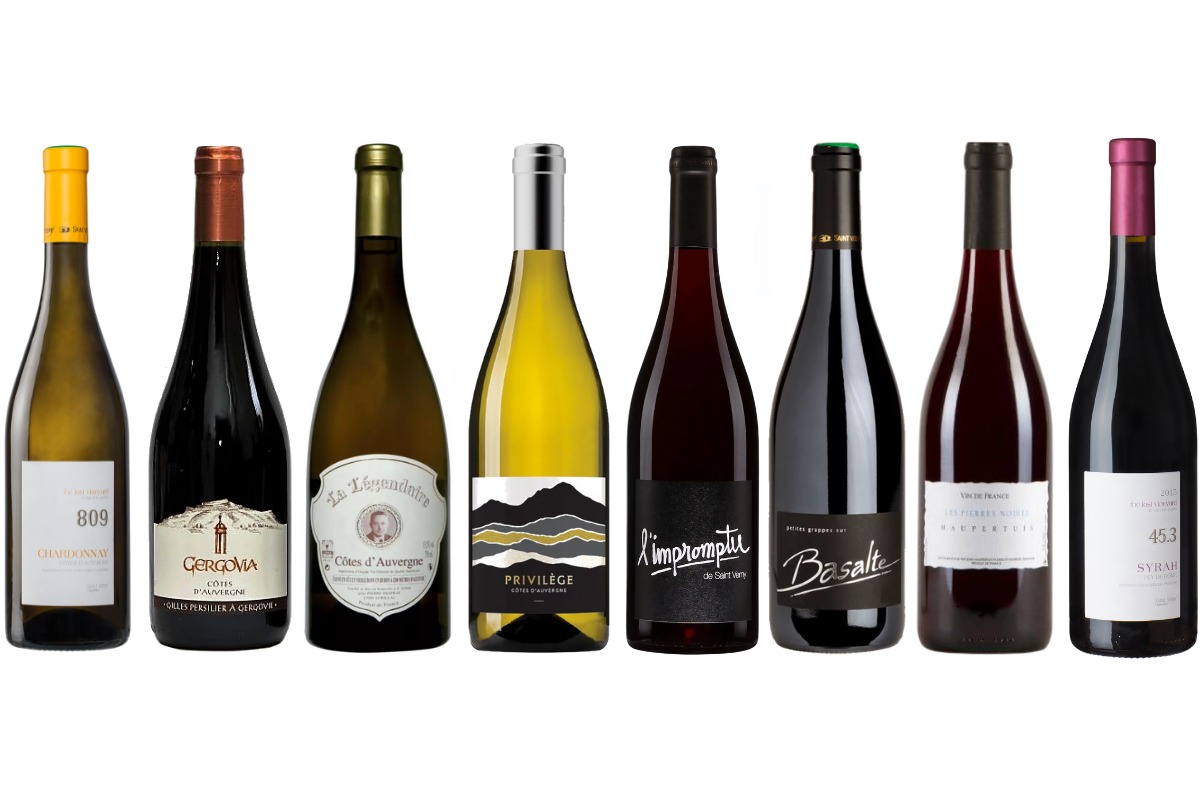
The Breville Sommelier really does speed up the aeration component of the decanting process, but be careful which wines you pour into it as not every wine will benefit from some micro-oxygenation.
Breville iFavine “The Sommelier” Average Retail Price $599
Over the past two decades in the industry I have experimented with innumerable gadgets that profess to increase one’s enjoyment of wine. Looking back over all those years and so many boxes of shiny chrome and/or matt black gear, I could only think of two things
1 – So unimpressed was I with all of said gadgets, I don’t believe that I used any of them more than once or twice before regifting them to someone on one or the other side of the family.
2 – I don’t think that I have ever found any better wine accessory than the simplest of glass decanters.
Timely decanting of a wine is, for me, one of the most important factors when one is wishing to serve a wine at its very best ; allowing certain wines to “breathe” undeniably improves their approachability and hence the imbiber’s enjoyment of said wines.
With this in mind, I was extremely curious when first hearing of Breville’s Sommelier unit, and reached out to Breville asking for a chance to test run The Sommelier and review it for GFR. And despite being highly dubious of the claims made by the marketing materials, after exhaustive testing I am happy to say that it does a pretty terrific job, and if it weren’t for the eye-watering/credit card-melting price tag would probably give it a full five apples.
So let’s get into it…
The Breville Sommelier consists of two parts:
The good-looking brushed stainless steel base is pretty damn weighty and reminds me a little of a higher-end midi-sized 90s hi-fi, arriving complete with a quite short black cable to plug it into a wall socket. The controls on this shiny box are very simple, with a power button, as well as a start and a stop/reset. The “volume” control allows the user to dial in the time of the decant in 15 second increments which are displayed on the attractive turquoise LCD screen. The manufacturers claim that one minute in The Sommelier is equal to one hour of traditional decanting, and my trials show this to be pretty damn accurate. Despite the decent design, for such a solidly built piece I was a little disappointed in the cheap-feeling, lighter plastic time dial and the decidedly unsmooth and outright janky manner in which it operated, most unbecoming for a control component at this particular price point. Hopefully this will be addressed in later models. This little detail aside, if you can overlook the basic control mechanism design fail, it’s actually a pretty cool base unit.
The proprietary iFavine branded hand-finished oxygenating carafe is integral to the whole setup. It is undeniably a clever piece of kit and not something you want to be too clumsy with, as it looks as if a replacement will set you back around $300. The double-walled central column allows the 90% pure oxygen purified by the base unit to be bubbled throughout the wine. Unlike a traditional decanter, where only the surface of the wine comes in contact with air, this process evenly exposes the wine to the purified oxygen, hence accelerating the aeration.
It’s basically domestic micro-oxygenation, so I guess one should think of it as mini Michel Rolland doing a personal consult on the wines at your dinner/kitchen table. The thought of a pint-sized Michel Rolland makes me snigger a little, but I suppose I’m a bit odd that way.
Both the instruction manual and quick start guide come with suggested aeration times for a selection of particular wine styles. This is augmented by the iFavine Pro app that appears to be a bit of a work-in-progress seeing as it didn’t seem to be aware of the Grenache/Garnacha or Gruner Veltliner varietals at the time of writing. Nevertheless, after a fair bit of experimentation it appears to me that the suggested times in the manual seemed to be pretty much spot on for the average user… although naturally I went way off-piste myself in my efforts to grasp a thorough understanding of how the unit performed.
Once The Sommelier is all set up with your desired decanting time a simple press of the start button begins the aeration process and the unit emits a low purring sound not unlike a motorcycle decelerating, occasionally punctuated by the noise of said motorcyclist attempting to stifle a mild bout of flatulence; despite my description it is all actually rather soothing as you watch the contents of the carafe subtly vibrate and bubble away.
As a sidenote, I couldn’t help but notice that throughout the packaging a graphic designer had obviously thought themselves rather clever replacing the O in Sommelier with O2
However, all I could read was SO2
And Sulphur Dioxide is not something that we necessarily want to find in our wine…
Wines That We Tried In The Breville iFavine Sommelier:
2017 Château De Courteillac Bordeaux AOC, Bordeaux, France (Alcohol 13%, Residual Sugar 3g/L) LCBO $14.25 (750ml bottle under cork)
When it comes to less expensive reds it appears that we are talking about a process that does not benefit such wines at all. It’s my theory that wines such as these have already seen so much micro-oxygenation before bottling that any addition oxygen added with this unit is simply overkill and the wine falls apart. In conclusion, The Sommelier does not make cheap wines taste like a million dollars.
Before The Breville Sommelier ![]()
After The Breville Sommelier (1m30s) ![]()
After The Breville Sommelier (3m) No appples – undrinkable
2016 Gerard Bertrand “Réserve Spéciale” Cabernet Sauvignon, VDP d’Oc, France (Alcohol 13.5%, Residual Sugar 6 g/L) LCBO $13.95 (750ml bottle under screwcap)
The same can be said for this drinkable and well-priced VDP. So well managed are the tannins throughout the production of this wine that there is nothing to be gained by the addition of any additional oxygen. Whilst the wine didn’t completely fall apart like the one above, The Sommelier wasn’t doing this one any favours and we witnessed rapidly diminishing returns with each increment.
Before The Breville Sommelier ![]()
After The Breville Sommelier (1m15s) ![]()
After The Breville Sommelier (3m) ![]()
2014 Grata “Vinum”, Priorat, Spain (Alcohol 14.5%) Noble Estates Consignment $35.99 (750ml bottle under cork)
Now this is where The Sommelier really comes into its own. Although this Grenache-based blend (there’s also some Carignan, Syrah, and Cabernet Sauvignon in there) was attractive enough straight out of the bottle, running it through the unit really made the wine so much more approachable, smoothing out a fair bit of those rougher edged tannins, especially on the second run through. Any volatility that was there vanished entirely. Although there was also a bit of a hit to the fruit component after 3 minutes, I felt that the wine then really began to express its mineral character. Gorgeous.
Before The Breville Sommelier ![]()
After The Breville Sommelier (1m30s) ![]()
After The Breville Sommelier (3m) ![]()
2015 Norman Hardie “Unfiltered” Chardonnay, Niagara Peninsula VQA, Ontario, Canada (Alcohol 11.9%, Residual Sugar 4 g/L) LCBO Vintages $39.20 (750ml bottle under screwcap)
Having had a little trouble with some of the more reductive aspects of Hardie wines over the years, I thought it would be prudent to run this recent Chardonnay release through The Sommelier, and it did a bloody great job at blowing off a little of that edge, leaving us with a wonderfully nutty and rich top flight Chardonnay that I fear many people would miss without all of that aeration. I’d love to try this unit on some Vinlock closure Austrian wines in the future, but none were available when I was undertaking these experiments.
Before The Breville Sommelier ![]()
After The Breville Sommelier (1m30s) ![]()
After the Breville Sommelier (3m) ![]()
2013 Ceretto Barolo, Piemonte, Italy (Alcohol 14%) Noble Estates Consignment $99.99 (750ml bottle under cork)
What with younger Barolos being notoriously impenetrable I was curious as to how the process worked upon such a wine. 90 seconds did a bang up job of loosening up and taming those astringent tannins and calming down that volatility, with the full three minutes making the wine a hell of a lot easier to enjoy for the average consumer. Looking through my notes today I see that I did notice a slight impact upon the fruit profile, but nothing that would give me any cause for concern. So yes, the unit works exceptionally well on more tannicly challenging wines such as this.
Before The Breville Sommelier ![]() (Because of aging potential… still very closed)
(Because of aging potential… still very closed)
After The Breville Sommelier (1m30s) ![]()
After The Breville Sommelier (3m) ![]()
2014 Hall “Ellie’s” Cabernet Sauvignon, Napa Valley, California (Alcohol 13.4%, Residual Sugar 3g/L) LCBO Vintages In 2019 $131 (750ml bottle under cork)
It was with this wine I feel that The Sommelier did its best work. So many Napa Cabs are poured directly from the bottle to the glass without any aeration whatsoever, and I’ve always felt that people are missing out so much when they consume such wines in this manner. It’s a pretty damn good wine to begin with, but after its first run through the unit it REALLY began to sing. This is a complex and layered example of Napa, and that little bit of oxygen really opens the wine up to reveal its nuances. The tannins don’t vanish, as they are integral to the wine, but they are smoothed and buffed out perfectly, making the Ellie’s an absolute delight to drink.
Before The Breville Sommelier ![]() (Although I wouldn’t really recommend drinking without any aeration)
(Although I wouldn’t really recommend drinking without any aeration)
After The Breville Sommelier (1m30s) ![]()
After The Breville Sommelier (3m) ![]()
In conclusion:
As you can see from the results above, The Sommelier was certainly of great benefit to more expensive wines with more complex and assertive tannin profiles, but I would imagine that anyone who was spending that much on a gadget like this wouldn’t usually be drinking sub $20 bottles that often.
Although it does say “For Household Use Only” on the bottom of the packaging, I can imagine this being of some serious benefit in a small restaurant situation. I’m just wishing that I had access to such technology back in the days when I was in the industry pulling corks on the floor, as it really works wonders on wines that benefit from decanting.
The manufacturer also recommends that one aerate spirits such as malt whisky, cognac and the like using a smaller 200ml carafe (to be purchased separately – currently $111.19 on sale). I’d be curious to experiment with this at some time in the future as I can see the potential there.
![]()
(Four and a half apples out of a possible five… only losing half an apple for the pricetag, as it’s a superb little machine if you have the $$$!)
Thanks to Breville for letting me play about with this, and Noble Estates for the excellent wines.

Edinburgh-born/Toronto-based Sommelier, consultant, writer, judge, and educator Jamie Drummond is the Director of Programs/Editor of Good Food Revolution… And yes, it works!







